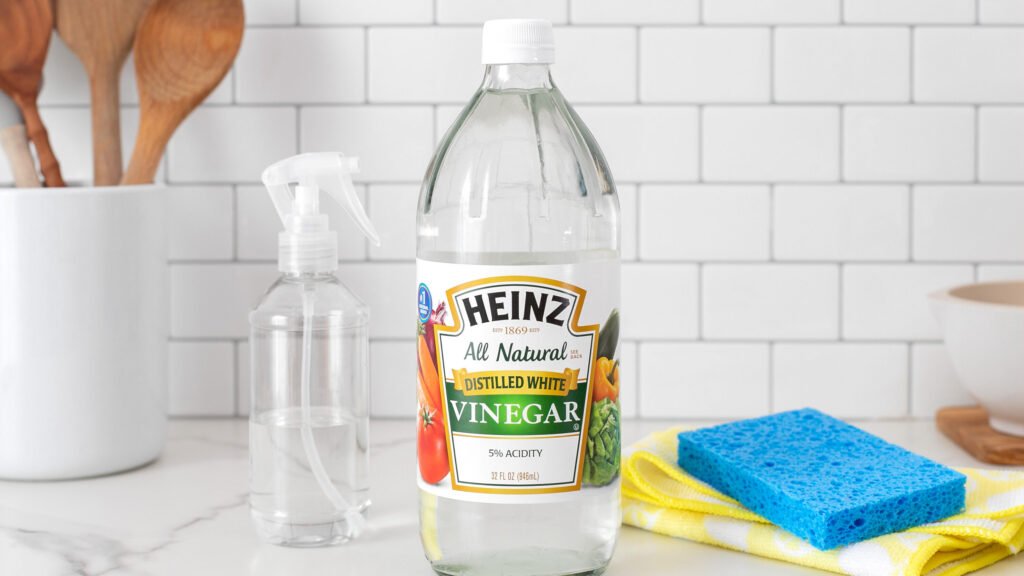
Cleaning a dishwasher regularly is essential to maintain its performance and longevity. Over time, food residues, grease, and mineral deposits can build up, leading to unpleasant odors and reduced efficiency. However, learning how to clean your dishwasher interior is easier than you think. With the right approach and a few simple cleaning techniques, you can help keep your dishwasher in tip-top shape.
In this article, we will guide you through the step-by-step process of how to clean a dishwasher quickly and effectively. From removing debris and unclogging spray arms to descaling and disinfecting, we will provide practical tips and tricks to ensure a thorough and hassle-free cleaning experience.
Importance of Cleaning a Dishwasher Regularly
Preventing Buildup and Clogs
Over time, the dishwasher accumulates various residues, including leftover food particles, grease, and soap scum. This accumulation settles at the bottom of your dishwasher’s tub, in the filter, and even within the spray arm. Here’s why this is important:
- Maintaining Proper Functionality: Accumulating debris in critical components like the drain hose, spray arm, and filter can lead to clogs. Clogs hinder the flow of water and detergent during the wash cycle, reducing the dishwasher’s ability to clean dishes effectively. Cleaning these components regularly helps ensure they remain clear and functional.
- Avoiding Costly Repairs: Neglecting regular cleaning can result in more severe issues, such as drain pump damage, which can be expensive to repair or replace. By preventing buildup and clogs, you can extend the lifespan of your dishwasher and save money in the long run.
Eliminating Odors
Foul odors from your dishwasher can be unpleasant and even affect your dishes. Here’s why regular cleaning is essential for odor control:
- Bacterial Growth: Food particles left behind on dishes can contain bacteria. Over time, these bacteria can multiply and create unpleasant smells. Cleaning the dishwasher regularly helps remove these remnants, reducing the potential for bacterial growth.
- Residual Food Odors: Some foods, like fish or garlic, can leave lingering odors in the dishwasher. Proper cleaning can help eliminate these residual food odors, ensuring your dishes come out smelling fresh and clean.
- Enhancing Kitchen Environment: An odor-free dishwasher creates a more pleasant kitchen environment. It’s imperative if your dishwasher is in an open-plan kitchen where odors can quickly spread.
Maintaining the Efficiency of Your Dishwasher
An efficiently functioning dishwasher saves you time and conserves water and energy. Regular cleaning is key to preserving your dishwasher’s efficiency:
- Optimal Water Circulation: Debris and mineral buildup on the spray arm or in the filter can impede water circulation within the dishwasher. When water doesn’t circulate properly, it can’t reach all the dishes, leading to subpar cleaning results. Routine cleaning ensures that water can flow freely, resulting in better cleaning performance.
- Minimizing Energy Consumption: When your dishwasher operates efficiently, it uses less energy and water per cycle. This not only saves on utility bills but also reduces your carbon footprint.
- Preventing Hard Water Damage: Some areas have hard water, which leaves mineral deposits on the dishwasher’s interior and components. Over time, these deposits can reduce efficiency. Regular cleaning and dishwasher cleaner tablets help combat hard water issues, ensuring your dishwasher operates at its best.
How Often Should You Clean a Dishwasher?
Establishing a regular dishwasher cleaning schedule is important to ensure it operates efficiently. Experts suggest cleaning your dishwasher at least once a month. However, if you use your dishwasher frequently or notice any signs that it needs cleaning, such as unpleasant odors or visible buildup, you may need to clean it more often.
Keeping an eye out for signs that your dishwasher needs attention is crucial. If you start noticing a lingering odor when you open the dishwasher or see dirty or cloudy dishes after running a dishwasher wash cycle, these signals that it’s time to clean your dishwasher. Remember to inspect the filter on the bottom rack of an empty dishwasher, as this often harbors debris that needs removal.
What Are the Best Methods to Clean a Dishwasher?

Using Baking Soda and Vinegar
Baking soda and vinegar are renowned for their natural cleaning properties. Baking soda’s abrasive texture helps remove stubborn buildup and stains, while vinegar’s acidity breaks down mineral deposits and eliminates odors. To start, empty your dishwasher of dishes, then place a dishwasher-safe container with one cup of white vinegar on the bottom rack. Next, sprinkle one cup of baking soda across the dishwasher’s bottom and run a hot wash cycle. This method is excellent for a deep clean, effectively removing buildup and leaving your dishwasher fresh and odor-free.
Using a Dishwasher Cleaner
If you prefer a specialized cleaning product, store dishwasher cleaners are an excellent choice. These cleaners are specifically formulated to penetrate and remove stubborn stains and buildup within your dishwasher. They are designed for convenience and efficiency. Follow the cleaner’s packaging instructions to ensure effective cleaning results. Using a dishwasher cleaner is an easy and reliable way to maintain your dishwasher in top condition.
Using White Vinegar
Distilled white vinegar is a versatile and budget-friendly cleaning agent that works wonders for various parts of your dishwasher. For instance, you can soak the spray arm in equal parts white vinegar and warm water to remove debris and mineral deposits. Additionally, wiping down the dishwasher’s interior with a cloth soaked in white vinegar can effectively remove stains and odors. This method is beneficial for regular maintenance, as it helps keep your dishwasher clean and running smoothly.
Step-By-Step Guide to Clean the Inside of a Dishwasher

Properly maintaining your dishwasher is essential for efficient and odor-free dishwashing. Cleaning the inside of your dishwasher not only enhances its performance but also prolongs its lifespan. Here’s a step-by-step way to clean the interior of your dishwasher, ensuring that it continues to deliver sparkling clean dishes with every cycle:
- Remove and Clean the Filter: Remove and clean the filter at the bottom of the dishwasher. This is often overlooked but essential for proper cleaning. Remove the filter, wash it with warm, soapy water, and rinse it thoroughly.
- Sprinkle Baking Soda: Open the dishwasher and, without dishes inside, sprinkle 1 cup of baking soda on the bottom of the dishwasher. This helps in removing odors and stains.
- Use Vinegar and Baking Soda: Place 1 cup of vinegar in a dishwasher-safe bowl on the top rack of an empty dishwasher. This will help with overall cleaning. Additionally, you can add 1 cup of baking soda on the bottom.
- Set the Dishwasher to Run: Close the dishwasher and set it to run a hot water cycle. You can use the normal cycle for this cleaning routine. Combining vinegar and baking soda will help remove grease and mineral deposits.
- Exterior Cleaning: While the dishwasher is running, take the time to clean the exterior of the dishwasher. Use a microfiber cloth or sponge to wipe down the door, controls, and visible surfaces.
- Monthly Cleaning: It’s a good idea to do this monthly to keep your dishwasher in top shape. Regular cleaning ensures your dishes come out clean and free from any residues.
- Remove and Clean the Top Rack: After the cleaning cycle is complete, remove the dishwasher-safe bowl from the top rack. You can also take this opportunity to clean the top shelf if it’s dirty.
- Check for Remaining Stains: Inspect the inside of the dishwasher for any remaining stains or debris. If needed, scrub stubborn stains with a sponge or cloth.
- Run a Rinse Cycle: If you still notice any lingering odors or residue, run another short cycle with hot water to ensure everything is thoroughly rinsed.
- Repeat as Needed: If your dishwasher is particularly dirty or has yet to be cleaned, you may need to repeat the process to achieve the desired cleanliness.
Following these easy steps and incorporating monthly cleaning into your routine will keep your dishwasher working effectively and ensure your dishes come out sparkling clean. Remember to regularly remove and clean the filter at the bottom to prevent clogs and maintain optimal performance.
How to Clean the Dishwasher Door and Exterior?
Cleaning the exterior of your dishwasher is essential to ensure its longevity and performance. Whether your dishwasher has a stainless steel or other finish, proper maintenance can help keep it looking its best and functioning efficiently. Here’s how to clean the dishwasher door and exterior effectively.
- Prepare the cleaning solution: Fill a container with warm water and add a small amount of dish soap to create a soapy water mixture.
- Dip the microfiber cloth: Dip a microfiber cloth into the soapy water mixture, ensuring it is thoroughly soaked.
- Wipe down the surfaces: Use the damp microfiber cloth to gently clean the stainless steel dishwasher door, control panel, and handle. Be thorough in your cleaning, addressing stains and spots.
- Address stubborn stains: Use a soft sponge or a non-abrasive brush for tougher stains. Rinse the cloth frequently and replace the soapy water if it becomes too soapy.
- Use a dedicated stainless steel cleaner or a solution of equal parts water and vinegar to clean the stainless steel surface.
- Wipe in the direction of the grain to prevent scratching.
- Dry the stainless steel surface with a clean cloth to achieve a streak-free finish.
- Use a dedicated stainless steel cleaner or a solution of equal parts water and vinegar to clean the stainless steel surface.
- Stainless steel care: If your dishwasher features a stainless steel exterior, it may require extra care to remove stains and fingerprints:
- Clean removable parts separately: Ensure that any details, such as control panels or nameplates, are dishwasher-safe before cleaning. If not, use a damp cloth to clean these components separately.
By following these cleaning tips using a microfiber cloth and soapy water, you can effectively clean the dishwasher door and exterior, maintaining its appearance and cleanliness. For stainless steel surfaces, proper care is essential to remove stains and fingerprints without damaging the finish.
Tips for Keeping Your Dishwasher Clean
Keeping your dishwasher clean is essential to ensure it functions efficiently and delivers sparkling clean dishes. Here are some tips and practices for maintaining a clean dishwasher:
- Before loading your dishes, make it a habit to scrape off any large bits of food from plates and utensils. This prevents food particles from collecting in your dishwasher, reducing the risk of clogs and ensuring a thorough wash cycle.
- Perform a vinegar rinse cycle monthly to keep your dishwasher clean and odor-free. Place a cup of white vinegar in a dishwasher-safe container on the bottom rack and run a hot wash cycle. This helps remove any buildup and lingering odors.
- Choose the correct dishwasher detergent recommended by the manufacturer for spotless dishes. Avoid using excessive detergent, as it can lead to residue buildup. Ensure that your detergent is suitable for your dishwasher to prevent damage.
- Don’t forget to clean the dishwasher filter regularly. Remove any debris or food particles that may have accumulated to maintain proper water flow and cleaning performance.
- In addition to vinegar, you can use baking soda to clean your dishwasher. Sprinkle a baking soda layer on the dishwasher’s inside and run a cycle without dishes. This helps eliminate odors and loosens any stubborn residue.
- Consider using dishwasher cleaning tablets designed to remove buildup and grease. Place one tablet in the detergent compartment or at the bottom of the dishwasher and run a hot wash cycle.
- Periodically check and clean the dishwasher’s spray arms. Remove obstructions and ensure the spray nozzles are debris-free to guarantee even water distribution.
- After running a cleaning cycle with vinegar or baking soda, use a damp cloth to wipe down the dishwasher’s interior, including the door gasket and edges.
- Make it a regular habit to clean your dishwasher, whether it’s with vinegar, baking soda, or cleaning tablets. Consistent maintenance will prevent the accumulation of grime and odors.
- The dishwasher filter is a crucial component for trapping food particles. Check and clean it frequently to maintain optimal performance and cleanliness.
By following these tips and practices, you’ll ensure that your dishwasher operates efficiently, your dishes come out sparkling clean, and your appliance remains odor-free. Regular maintenance is vital to a long-lasting and trouble-free dishwasher.
Frequently Asked Questions
Q. Why is cleaning my dishwasher with vinegar and baking soda important?
A. Cleaning your dishwasher with vinegar and baking soda is essential for several reasons. Over time, bits of food, soap scum, and minerals from hard water can accumulate in your dishwasher, leading to inefficient cleaning and potential damage to the appliance. Regular cleaning helps remove these residues, ensuring your dishwasher operates efficiently and lasts longer.
Q. Can I use a dishwasher tablet instead of vinegar and baking soda for cleaning?
A. While dishwasher tablets are designed for cleaning dishes, they are not as effective at cleaning the dishwasher’s interior. Vinegar and baking soda are preferred because they help dissolve mineral deposits, remove odors, and break down residue buildup. Using a dishwasher tablet in the bottom can help somewhat clean the interior. Still, it may not be as thorough as using vinegar and baking soda in separate cycles.
Q. How can you ensure your dishwasher filter is free from lingering baking soda residue after cleaning?
A. To ensure your dishwasher is free from any lingering baking soda residue after cleaning, running an additional rinse cycle is essential. After the baking soda cleaning cycle, inspect the dishwasher’s interior for any remaining residue, wiping it away if needed. Then, place a dishwasher-safe bowl filled with white vinegar on the top rack and run a rinse-only cycle with hot water. The vinegar will help neutralize any remaining baking soda residue and eliminate odors, leaving your dishwasher clean and ready for use.
Q. Why is it recommended to fill a dishwasher-safe bowl with vinegar during cleaning?
A. Filling a dishwasher-safe bowl with vinegar during the cleaning process is recommended for several reasons. Vinegar effectively eliminates unpleasant odors that can develop in the dishwasher, dissolves mineral deposits and limescale buildup, acts as a natural disinfectant, and serves as a rinsing aid during the rinse cycle. This step not only cleans and deodorizes your dishwasher but also contributes to its efficient operation and the cleanliness of your dishes.
Conclusion
In conclusion, maintaining a clean dishwasher is a critical aspect of appliance care that is often overlooked. Knowing how to clean your dishwasher properly is more than just a routine chore; it’s a way to ensure its longevity and efficiency. Neglecting this task can lead to unpleasant odors, compromised cleaning performance, and potentially costly repairs.
Utilizing everyday household items like vinegar and baking soda to remove built-up residue from the interior, including the often-neglected dirty filter, is a simple yet effective approach. By making regular dishwasher cleaning a habit, you not only keep your appliance in peak condition but also ensure the hygiene and cleanliness of your dishes.
For more insightful articles like this, subscribe to our community at the Family Hint today!



